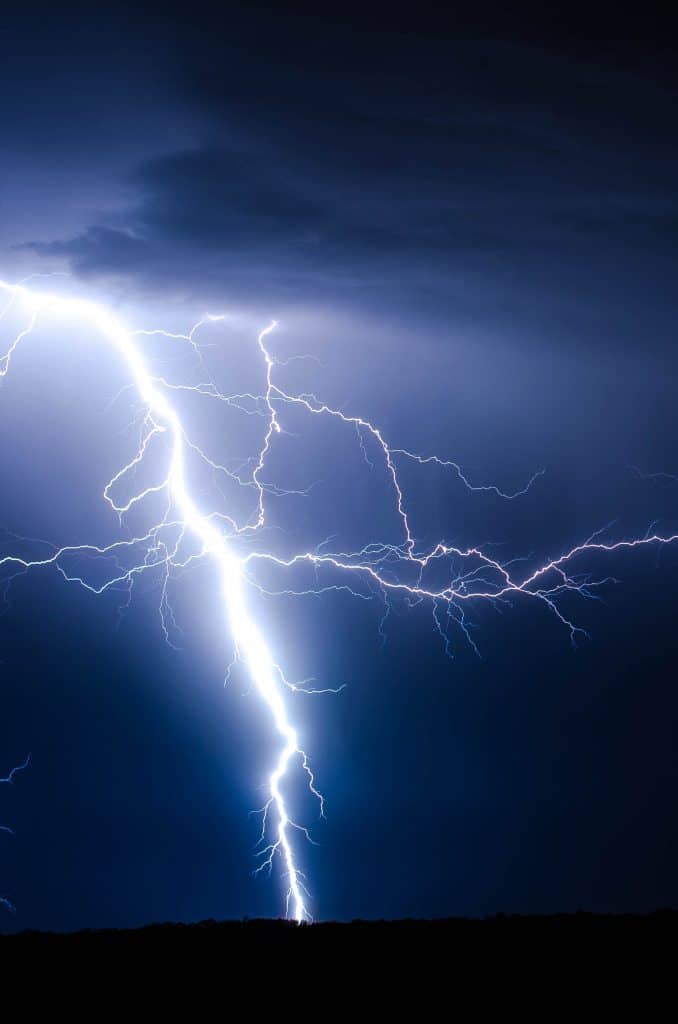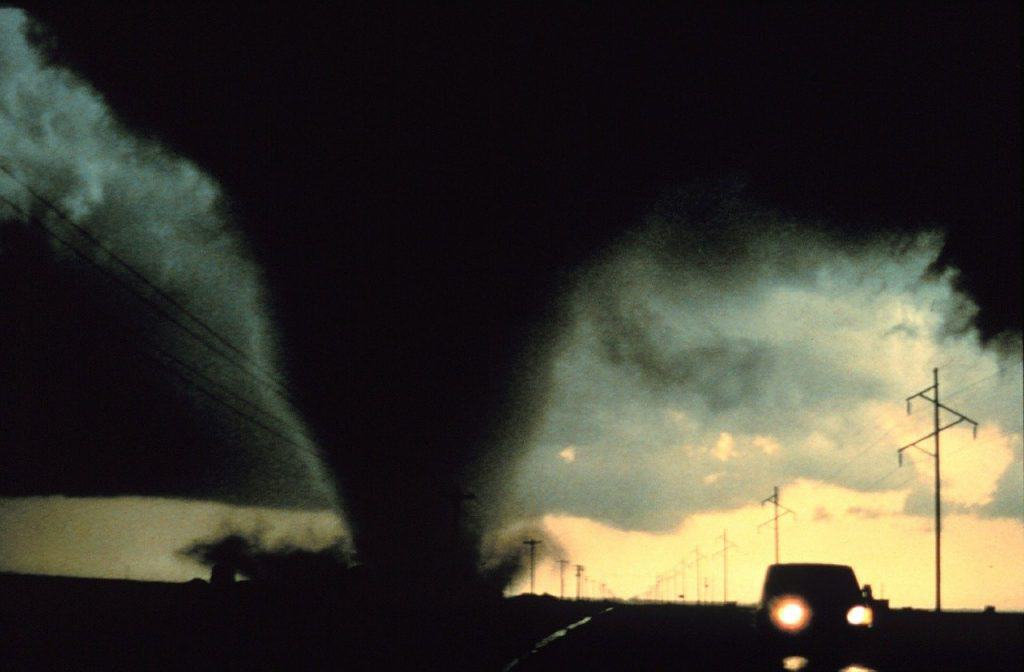
Talking about the weather is a go-to for awkward interactions. However, these weather facts are no small talk.
- The weather is the state of the atmosphere
- Most weather occurs in the troposphere.
- Weather is the daily temperature and precipitation measure. (Short-term)
- Climate is the average weather condition in a specific area. (Long-term)
- Differences in air pressure, temperature, and moisture in a certain place change the weather.
- Meteorology is the study of weather patterns and the atmosphere.
- Weather is a chaotic system – one tiny change can have huge effects.
- High altitudes are cooler than lower altitudes.
- Inversion makes higher altitudes warmer than surface level.
- The atmosphere is 78% Nitrogen, 21% Oxygen, 0.9% Argon, 0.03% Carbon Dioxide.
- The air gets denser from space to the Earth’s atmosphere – it’s most dense at the Earth’s surface.
- It’s harder to breathe in high places because the air is “thinner” – the oxygen molecules have more spaces.
- Ancient Indian writings first discussed weather in 3000 B.C.
- The highest temperature recorded was at 54.0 °C In Death Valley, California on June 30, 2013.
- The lowest temperature recorded was −89.2 °C at the Soviet Vostok Station, Antarctica on July 21st, 1983.
- Babylonians were the first to predict weather in 650 B.C.
- The first weather forecasts were announced to help plan seasonal crop activities.
- Rain gauges were the first weather measuring devices. They were used by the ancient Greeks and Indians.
- Aristotle wrote Meteorology in 350 B.C.
- Tropical countries don’t experience snow because the areas along the equator get more sunlight.
Waterspouts can make sea creatures "rain" from the sky.

Imagine going outside to fish rain? Watersprouts can pick up small animals and send them somewhere else. A tornadic waterspout is a tornado that forms over land and travels over the water.
Weather occurs in the troposphere.
The troposphere is the lowest layer of the Earth’s atmosphere and makes up 75% of it. The troposphere holds 99% of the atmosphere’s water vapor.
There are three sources of precipitation.
The three ways precipitation can form are: frontally, orographically, and convectively. Frontal precipitation occurs when two masses of air meet. Orographic precipitation occurs when the shape of the land causes clouds to form. Convective precipitation is a result of clouds forming due to instability in the atmosphere.
Weathervanes have roosters on them because of the Church.

In the 9th century, Pope Nicholas decreed that all churches display the rooster on their steeples as a symbol of Peter’s betrayal of Jesus.
Thunder doesn’t just come after lightning, it is caused by lightning.
One of the more fascinating weather facts: Thunder is produced when lightning “slices” air pressure in the atmosphere. When lightning retracts, the colliding air pressure rushing back together creates the “clap” noise we are familiar with.
Worms wriggle up to the surface before a flood.
Worms can’t get oxygen when the soil is flooded, so they come up from the ground to breathe.
In 1684, it was so cold that the River Thames froze solid for two months.
The ground froze too, so no harvesting or planting of crops could take place.
Lightning often strikes the same place.

If it’s a tall, pointed, and isolated object, then more so. Lightning strikes the Empire State Building around 23 times a year.
Being underneath a tree is the second leading cause of lightning deaths.
It is the second leading cause of lightning deaths. It is more advisable to stay indoors during thunderstorms and avoid conductors such as metals and wires.
Lightning causes forest fires.
Smoke and carbon micro-particles in the upper atmosphere can initiate static. Atmospheric static can spark discharge which turns into lightning. Massive lightning storms in coastal Brasil, Peru and Hawaii have been linked to burning sugar cane fields.
Being exposed to a storm can be deadly.
If it takes less than 30 seconds to hear thunder after seeing the flash, the lightning is near enough to pose a threat. There is no way to be safe unless you stay indoors. Wait 30 minutes after the storm ends before going outside.
Cape Denison is the windiest place on Earth.
Cape Denison is recognized as the windiest sea level station on Earth. It is a rocky point at the head of Commonwealth Bay in East Antarctica. Its wind speed reached up to 153km/h.
It rained “blood” in India.

The Kerala red rain occurred from July to September 2001. Heavy downpours of red rain fell sporadically on the southern Indian state of Kerala. It was first thought due to fallout from a meteor burst, but a study concluded that the rains were colored by airborne spores.
Heatwaves can bend train tracks.
Steel tracks expand when temperatures rise. This places lots of stress on the parts that keep the tracks fixed on the ground. Eventually, the train tracks will bend.
Hurricane Irma is a record-breaking hurricane.
Hurricane Irma was the longest-lasting powerful hurricane or typhoon recorded worldwide. Shockingly, Irma sustained 185-mph winds for 37 hours. This is the longest maintained intensity for any cyclone.
The largest hailstone recorded in the U.S. was found in Vivian, South Dakota.
It was found on July 23, 2010. It measured 8.0” in diameter, 18 ½” in circumference, and weighed at 1.9375 pounds.
Do frozen fish die in the winter?

Fish cells contain saline. Saltwater has a lower freezing point than pure water, so cold-water fish are not technically frozen. Their internal organs retain function, and in some cases, they can slow down their metabolism. Some fish contain an antifreeze substance that allows them to survive. However, for tropical fish or fish not suited for freezing, they may die after a certain period.
Tamarack, California has record-breaking snow.
It had the deepest snow recorded at 453 inches. In March 1911, Tamarack also recorded the largest snowfall in a single month in the US at almost 400 inches.
The Great Fire of 1910 was the worst fire in history.
It burned 3 million acres of Northern Idaho and Western Montana. The wildfire killed 87 people – mostly firefighters – and is believed to be the largest wildfire in U.S. history.
The Iran Blizzard of February 1972 was the deadliest blizzard in history.
A week-long period of low temperatures and severe winter storms resulted in the deaths of approximately 4,000 people.
The average lightning casualties in the U.S. is 51.
Lightning casualties are just behind floods for deadly weather. In the US, between 9% and 10% struck by lightning die. In the 2010s, there has been an annual average of 25 lightning casualties and a 51 average in the last 20 years.
Texas gets the most annual tornadoes out of any state.

Texas gets an average of 110 tornadoes a year. “Hurricane” comes from the Taino Native American word hurucane, which means “evil spirit of the wind.”
There are 13 kinds of storms.
It may seem rather apt, given that it’s widely considered an unlucky number, but there are 13 recognized types of storms. Different types occur depending on geography and climate. Tornadoes, windstorms, dust devils, squalls and gales are primarily recognized by their wind patterns. Hailstorms, ice storms, snowstorms, blizzards, ocean storms, thunderstorms, and tropical cyclones are other known weather disturbances. You might know tropical cyclones better by one of their other names, depending on where you live: typhoons, cyclones, hurricanes, tropical depressions or tropical storms.
The Upanishads were the earliest weather scholars.
Centuries before Aristotle wrote Meteorology, the Indian Upanishads featured the description of a specific meteorological event – the formation of clouds. These beautiful verses also contemplated the climate and the seasonal cycles caused by the Earth’s orbit. No one is quite sure when the Upanishads were written, but they are believed to be around 2,500 years old.
Christopher Columbus encountered a cyclone in one of his expeditions.

On one of his numerous missions, Christopher Columbus encountered a tropical cyclone in 1494. His notes were the first written account of this type of storm by a European.
The first weather network was established in 1654.
A member of the illustrious Medici family, Ferdinando II de Medici established the world’s first known weather observing network. With 11 stations in Warsaw, Florence, Bologna, Milan, Paris, and other cities, this network gathered meteorological data sent to Florence regularly.
The first weather forecasting service was in the UK.
Robert Fitzroy was appointed the first Meteorological Statist to the Board of Trade in the United Kingdom, which later became the UK Meteorological Office. The former HMS Beagle captain ran the first meteorological service in the world and initiated the everyday tradition of printing weather forecasts in newspapers in 1860.
In some places, it snows pink.

You know what they say about yellow snow, but you’d be surprised that it isn’t the only color in the snow spectrum. In the alpine regions of Colorado or in California’s Sierra Nevada Mountains, pink snow is a thing. The phenomenon is caused by algae called Chlamydomonas nivalis. This reddish-tinged algae only live in cold climates and can sometimes turn a winter wonderland a fabulous shade of pink.
The most rainfall in one minute is over an inch of rain.
It’s raining cats and dogs! The most rainfall ever recorded in the space of a minute occurred in Unionville Maryland, on April 7 1956. On that day, 1.23 inches of rain fell from the sky in just 60 seconds. Over 50 years later, it’s still the highest recorded rainfall in one minute.
Climate Is Attributable to Air Stress, Temperature and Moisture Variations
At its most primary, climate is brought on by variations in air stress, temperature and moisture. Several types of climate phenomena are created when these elements are combined collectively in diverse proportions. For instance, to make a twister, combine some bloodless polar air at a excessive altitude with some warm, heat tropical air at low altitudes!
There Are Three Methods to Make Rain
There are three distinct methods to create rain or snow on Earth: frontally, orographically, and convectively. Frontal rain takes place when two lots of air meet. Orographic rain happens when the form of the land causes clouds to kind. Convective clouds create convective rain. These clouds type as a result of an instability within the environment.
13 Diverse Varieties of Storms Have an effect on Earth
It could appear fairly apt, on condition that it’s broadly viewed an unfortunate quantity, however there are thirteen various kinds of storm right here on Earth. A number of these storms can solely take place in specific areas due to the geography and local weather of these areas. Climate details inform us that tornadoes, windstorms, dirt devils, squalls and gales are primarily acknowledged by their wind patterns. Hailstorms, ice storms, snowstorms, blizzards, ocean storms, thunderstorms and tropical cyclones are acknowledged by the precipitation they create. You can know tropical cyclones higher by one among their different names, relying on the place inside the world you stay: typhoons, hurricanes, tropical depressions or tropical storms.
Meteorology Is the Research of the Ambiance
Meteorology is the title for the scientific examine of the ambiance and consists of the climate forecasting we hear on the information or see on our smartphones each day. It’s an interdisciplinary subject that helps to clarify climate phenomena.
Aristotle Is the Father of Meteorology
Aristotle wasn’t simply a superb thinker; he’s additionally credited as being the founding father of meteorology. In 350 BC, Aristotle penned a e book he referred to as Meteorology. Inside its covers, he detailed a procedure that meteorologists have since termed the hydrologic cycle. He did all of this without using the flowery computer systems which might be now in famous use inside the self-discipline.
The Upanishads Dip into The Research of the Climate
Centuries earlier than Aristotle wrote his famed e book, the Indian Upanishads featured the outline of a particular meteorological occasion – the formation of clouds. These lovely verses additionally contemplated the local weather and the seasonal cycles brought on by the Earth’s orbit. Nobody is pretty positive when the Upanishads had been written, however they may be believed to be round 2,500 years previous.
Christopher Columbus Skilled a Cyclone in 1494
Climate details point out that whilst on one in every of his several missions, Christopher Columbus skilled a tropical cyclone. His notes had been the primary written account of this kind of storm by a European.
A Medici Established the First Climate Community
A member of the traditionally well-known Medici household, Ferdinando II de Medici, created the world’s first regarded climate observing community. With stations in Warsaw, Florence, Bologna, Milan, Paris and different cities, this community collected meteorological information and despatched it to Florence frequently.
The UK Had the World’s First Climate Service
Robert Fitzroy, famed captain of the HMS Beagle, was appointed the primary Meteorological Statist to the Board of Commerce within the United Kingdom, which later grew to become the UK Meteorological Workplace. Climate details inform us that the previous captain ran the primary meteorological service inside the world and started out the in the end widespread custom of printing climate forecasts in newspapers in 1860.
Generally Snow Is Pink
You would possibly be amazed if it snows within the alpine areas of Colorado or in California’s Sierra Nevada Mountains… generally, pink snow is noticed! In accordance to climate details, the phenomenon is attributable to an algae referred to as chlamydomonas nivalis. This reddish-tinged algae solely lives in bloodless climates and may generally flip a winter wonderland a fetching shade of pink.
Blown Away at 231 Miles Per Hour
In April 1934, a storm in Mount Washington, New Hampshire, reared its ugly head with a wind gust measuring an amazing 231 miles per hour. It was the quickest floor wind velocity noticed by a human.
Over an Inch of Rain Fell in One Minute in Maryland in 1956
The foremost rainfall ever recorded inside the house of a minute occurred in Unionville Maryland, on April 7 1956. On that day, 1.23 inches of rain fell from the sky in only 60 seconds. Over 50 years later, it’s nonetheless the very best recorded rainfall in a single minute.
530,000 Have Died Due to Climate from 1994-2013
Non-authorities institution Germanwatch reported that severe climate has killed extra than 530,000 individuals between 1994 and 2013. In that point body, climate is believed to have price the world over $2 trillion in economic losses.
South Dakota Is Domestic to the Largest Hailstone
The most important recorded hailstone measured eight inches and weighed nearly two kilos. It fell on July 23, 2010, in Vivian, South Dakota. The US’ Country wide Climate Service verified the stone’s measurement and weight.
Climate Details – Details in regards to the Climate Precis
The climate we knowledge is created within the troposphere, the bottom layer of the Earth’s environment. Whilst Earth isn’t the sole place inside the universe with climate, it’s this climate that impacts us the foremost. Climate is brought on by variations in air strain, temperature and moisture. Aristotle is credited as being the daddy of meteorology, which is the research of the Earth’s environment and climate, even though the examine of climate could have predated his e book Meteorology by a millennium if we think about the discussions of climate inside the Upanishads.
No associated posts.
Was this page helpful?
Our commitment to delivering trustworthy and engaging content is at the heart of what we do. Each fact on our site is contributed by real users like you, bringing a wealth of diverse insights and information. To ensure the highest standards of accuracy and reliability, our dedicated editors meticulously review each submission. This process guarantees that the facts we share are not only fascinating but also credible. Trust in our commitment to quality and authenticity as you explore and learn with us.
